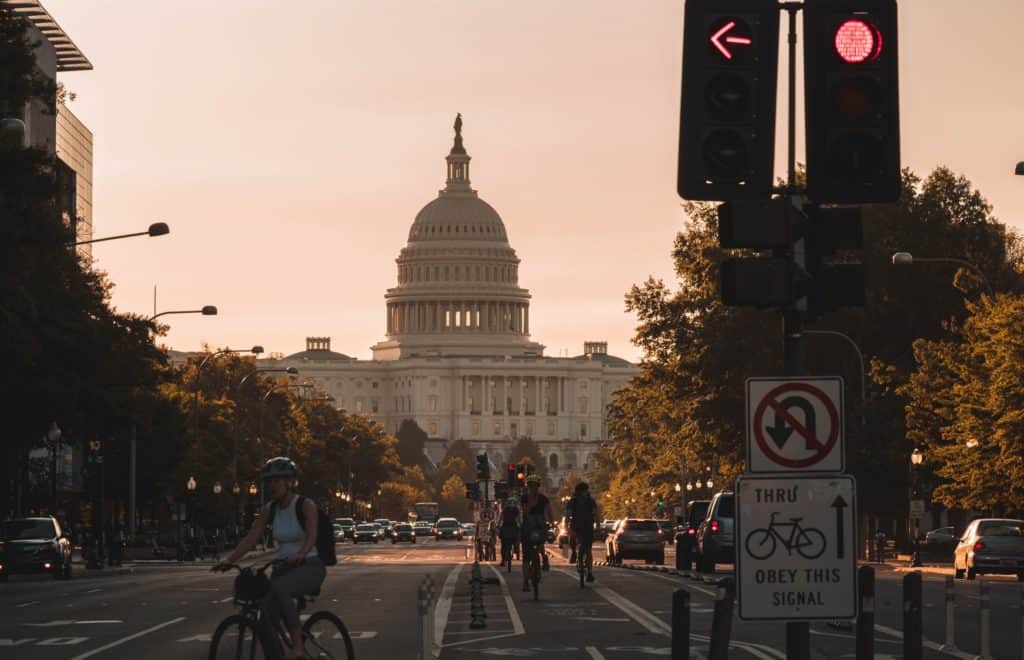Since the Biden administration first announced the Build Back Better Act, the legislative journey has been bumpy. The act passed in the house, but a torn senate has nipped and tucked the proposal. Still, Congress may pass an edited version of the act or individual bills covering its different aspects. The central tenet of the Build Back Better framework is rebuilding the American middle class, with a number of features aimed at supporting small business owners.
President Joe Biden and his administration developed and introduced the Build Back Better framework early in the presidential term. Some core areas the bill focuses on are:
- Children and caregiving
- Clean energy and climate change
- Health care
The plan also promises to revamp the federal tax code and force large corporations to pay more in federal taxes, while offering incentives to small business owners.
Efforts to improve circumstances for small business owners include tax cuts and an overhaul of the tax system to remove unfair advantages given to large corporations. Although the House of Representatives passed the bill by a narrow margin in November, progress has stalled since then due to a precarious Senate and the unwillingness of lone Democratic holdout, Senator Joe Manchin of West Virginia, to agree to all of its provisions.
What’s the latest on the Build Back Better Act?
The BBB Act has been evolving for the first few months of 2022. With a range of facets, the bill includes: Initiatives to combat climate change through new investments and tax credits, policies to strengthen the Affordable Care Act, and large investments in affordable housing and immigration reform. The bill also considers tax treatments for corporations.
In December 2021, Manchin released a statement explaining that he could not vote “yes” on the Build Back Better bill. His primary reason? The $4.5 billion cost, according to the Congressional Budget Office (though the bill’s supporters cite a figure about half of that amount).
In recent weeks, Manchin has offered potential compromises in which not all of the BBB Act measures will be included in the Senate version of the bill. He proposed getting rid of expanded childcare, universal pre-kindergarten, national paid family leave, and long-term home health care. Manchin has argued that spending more on social programs cannot lower costs or fight inflation.
Because every single Democrat vote is crucial to the bill’s passage, Manchin must vote to approve the bill for it to have any chance.
In Biden’s State of the Union address on March 1, 2022, the President focused less on the Build Back Better bill and its terminology. Instead, he pivoted to emphasize the need for specific initiatives aimed at lowering costs for American families.
Almost daily, the news updates Americans with another suggested workaround for provisions in the Build Back Better Act. It’s still unclear whether the Senate will pass some version of the bill. As of now, it’s possible it will pass with major edits or split up into individual legislative initiatives.
How might the Build Back Better Act impact small businesses?
The chairwoman of the House’s Committee on Small Business, Nydia M. Velázquez, said upon the House’s passage of the act, “The Build Back Better Act makes a $5 billion generational investment in small firms.”
Here are some elements on how the BBB act would impact small businesses:
Paid family and medical leave for small businesses
The foremost way the bill would impact small businesses is the possibility of a national, federally funded paid family and medical leave initiative. Advocates say this would enable small firms to compete with large firms. Small operations often do not have the financial resources to offer significant paid leave.
“It isn't just about supporting the businesses themselves, but also allowing individuals the opportunities to succeed through child care support and wage increase, in order to make it viable for them to stay with smaller businesses who sometimes can't afford the same benefits as corporations.” - Zach Blenkinsopp, small business owner, Digital Roofing Innovations
For small business owners, this could mean having a greater pool of qualified candidates to apply for positions based on the improvement in paid leave benefits. What Bloomberg referred to as a “great talent recession” has a ripple effect for small businesses. Paid leave under BBB would be more comprehensive than unpaid leave-taking under the current Family and Medical Leave Act (FMLA).
Federal contract access and funding initiatives
Another potential change for small businesses: Greater access to federal contracts. Biden wants to increase the targets for federal contract dollars to go to small, disadvantaged businesses (such as those in HUBZones). This goal includes efforts to increase the potential for small businesses to grow in underserved and underrepresented communities, including minority-owned businesses.
The BBB agenda plans to create a new grant program via the Minority Business Development Agency. If approved, this program would offer greater access to private capital for small and underserved manufacturers, focusing on equity in the small business market.
Innovation funding is another factor small business owners will want to pay attention to. While the White House addressed it vaguely in its fact sheet, Congress would be responsible for investing in federal funding that would empower small companies to participate in research and development initiatives.
With expanded federal contract access and funding, entrepreneurs will have a greater chance of succeeding in the small business market—even as the economy rapidly changes in a pandemic and post-pandemic era.
More funding for the 7(a) loan program
In Biden’s plan, more funding would be injected into the Small Business Administration’s 7(a) loan program. This would impact small business owners by increasing access to lending and investment capital. If BBB passes, it may be easier to qualify for the SBA’s most popular loan type.
Uplifting the supply chain
Finally, the Build Back Better agenda aims to strengthen manufacturing supply chains. This involves initiatives to support critical goods production, an especially crucial element given ongoing supply chain bottlenecks. It also involves spurring technology development and new business creation. This could ease the burden on businesses across industries by making accessing goods and materials easier and more affordable.
Proposed small business tax cuts included in the Build Back Better Act
In general, Biden’s Build Back Better plan offers a series of tax code reforms meant to “level the playing field” for small business owners. By reducing incentives typically reserved for large corporations and offering tax cuts to small businesses, the plan seeks to fuel economic growth by putting more power in the hands of small business owners.
Some high-earning individuals and corporations would pay more in taxes under the bill. Tax increased aimed at large companies include:
- Raising the corporate income tax rate to 28%
- Enforcing a minimum 15% tax on book income for large, highly profitable corporations (lawmakers have not yet defined what large and highly profitable means)
Pro Tip: The Internal Revenue Service (IRS) taxes different business structures in different ways. For example, limited liability companies, or LLCs, can be taxed once or twice depending on which option results in lower overall taxes. S corporations are taxed once on shareholder profits while C corporations are taxed twice at the corporate and shareholder level.
The Build Back Better Act hasn’t yet specified which business structures and sizes would receive favorable tax treatment, but small local businesses employing handfuls of people are categorically different from multinational conglomerates. Businesses in the gray area will need to wait to see where they would fall on the spectrum for the Build Back Better Act.
The Biden administration cited a study by the Institute on Taxation and Economic Policy (ITEP) showing that 55 large corporations avoided paying federal corporate taxes in 2020. The Build Back Better Act aims to remove loopholes and corporate tax havens that keep more profitable companies from paying their fair share.
According to the White House, the plan would cut taxes for approximately 3.9 million small business owners. This includes extending the child tax credit expansion within the American Rescue Plan that came to fruition during the pandemic, affecting about three million small business owners with children.
The administration’s fact sheet also states that nine million people—including 1.2 million small business owners—would receive tax benefits if they buy health coverage through the Affordable Care Act (ACA) marketplace.
Although these tax cuts may sound promising, Democrats have not yet specified the percentages of tax cuts small business owners may expect. It’s all part of the legislative negotiation process.
Potential downsides for small businesses if Build Back Better passes
Although Biden and the proponents of the Build Back Better Act say that it will offer great benefits to small business owners, there are potential drawbacks to consider. Three key issues critics bring up include:
- Small business surtax (aka an added tax on businesses in addition to ordinary income taxes)
- Mandatory paid leave
- Stricter small business labor fines
According to the National Federation of Independent Business (NFIB), several aspects of the bill would harm small business owners while helping other Americans. Though officially a nonpartisan organization, the NFIB has historically supported Republican candidates and causes, which may affect its assessment of the Democrat-born bill.
The NFIB critiques a small business surtax within the Build Back Better Act, specifically a 3.8% tax applied to business owners earning more than $400,000 (or more than $500,000 on a joint return).
Secondly, critics say that requiring businesses to offer four weeks of paid family and medical leave starting in 2024 will unfairly burden small business owners. Since companies with fewer than 50 employees don’t currently have to abide by the Family and Medical Leave Act (FMLA), this would certainly impact smaller firms.
The NFIB states, “This paid leave program mandate would only worsen the labor shortages that are affecting small businesses.”
Note: BBB Act supporters assert that paid family leave would help businesses attract talent, rather than adding to workforce shortages.
A final issue that critics find with the act is that it would massively increase fines on businesses that violate federal labor laws. Even small, inadvertent errors could cause small businesses to face steep monetary penalties that larger companies can more easily absorb.
For example, the NFIB points out violations for minimum wage and overtime errors increasing from $1,100 to $20,740 apiece. Maximum fines for tipped credit violations could increase from $1,100 to $11,620. These are steep increases in penalties for any company to handle, but especially devastating for small businesses.
Small business owner Kevin Callahan of Flatline Van Co. says these costs “threaten to bankrupt small businesses who cannot afford just one violation.”
What can help with this issue of higher labor fines on employers? Another bill under consideration. In January 2022, the NFIB voiced its support for legislation aimed at helping small businesses to correct any minor violations on wages and hours before incurring penalties. The House and Senate both have versions of the Ensuring Workers Get PAID Act of 2021.
Although only in the “introduced” stage of the House as of April 2022, the passing of the Ensuring Workers Get PAID Act could alleviate concerns of small business owners seeking to remain compliant with labor directives.
A timeline of the Build Back Better Act
Let’s rehash what has happened so far with the Build Back Better Act:
- In August 2021, the White House released its initial fact sheet detailing the plans within the Build Back Better framework to impact tax fairness for small businesses.
- On November 19, 2021, the US House of Representatives passed the Build Back Better Act by a vote of 220-213.
- On December 19, 2021, Sen. Joe Manchin stated that he would no longer support the bill, claiming it added too much to the federal deficit.
- At the end of March 2022, Senator Manchin reportedly was back in negotiation mode and hoping to vote on a revised bill before the Senate adjourns in August. He has said, “It's still possible to reach a deal that includes billions of dollars' worth of provisions to tackle climate change, cut prescription drug costs and update the tax code.”
- The social safety net portion of Build Back Better seems less likely to gain Manchin’s approval.
- According to Bloomberg Government, in Biden’s latest budget proposal, he’s expected to avoid specific figures of costs and revenues included in the Build Back Better Act.
Rather than spelling out the costs of specific proposals in the Build Back Better plan, Biden will likely refer to simply a “deficit-neutral reserve fund.” This is because the Biden administration maintains that the plan will be fully self-funded and he will likely want to avoid adding conflict to the negotiations among members of Congress.
Last word on the Build Back Better Act for small businesses
Though the future of the Build Back Better Act is still uncertain, a few things are sure:
The bill must pass the Senate, with all 50 Democratic members willing to use reconciliation. In the months since the bill passed in the House, Sen. Manchin and others have been going back and forth about which provisions and initiatives must be excluded in order for him to vote “yes” in the Senate.
It appears that some version of the bill could gain Senate approval if it coincides with reducing the federal deficit. Since that’s one of Manchin’s steadfast conditions, legislators could come together with a deal that raises part of the money through tax reforms instituted by the IRS and other measures to pay down the deficit.
An alternative to the BBB Act is a collection of bipartisan bills. These initiatives could address some of the issues within the bill, like the child tax credit or lowering prescription drug costs. In these cases, Democrats will need to secure the support of at least 10 Republican senators to make progress on any individual bill.
It’s also quite conceivable that no form of the Build Back Better Act will pass both houses of Congress. The Senate has put lots of time into confirmation hearings for Supreme Court justice nominee Ketanji Brown Jackson, and will be paying attention to the midterm elections and other matters at hand moving forward.
The challenge? Reaching the necessary funding and proposal compromises by midterm elections time. Biden and those who have worked to pass the Build Back Better Act still have a long way to go.
What can you do? If you’re a small business owner with opinions to share, you can contact your congresspeople via email, phone, or mail. Check out the congress.gov website to find the right contact information. Making your voice heard about the various elements of the Build Back Better Act is essential—regardless of which side you’re on.


